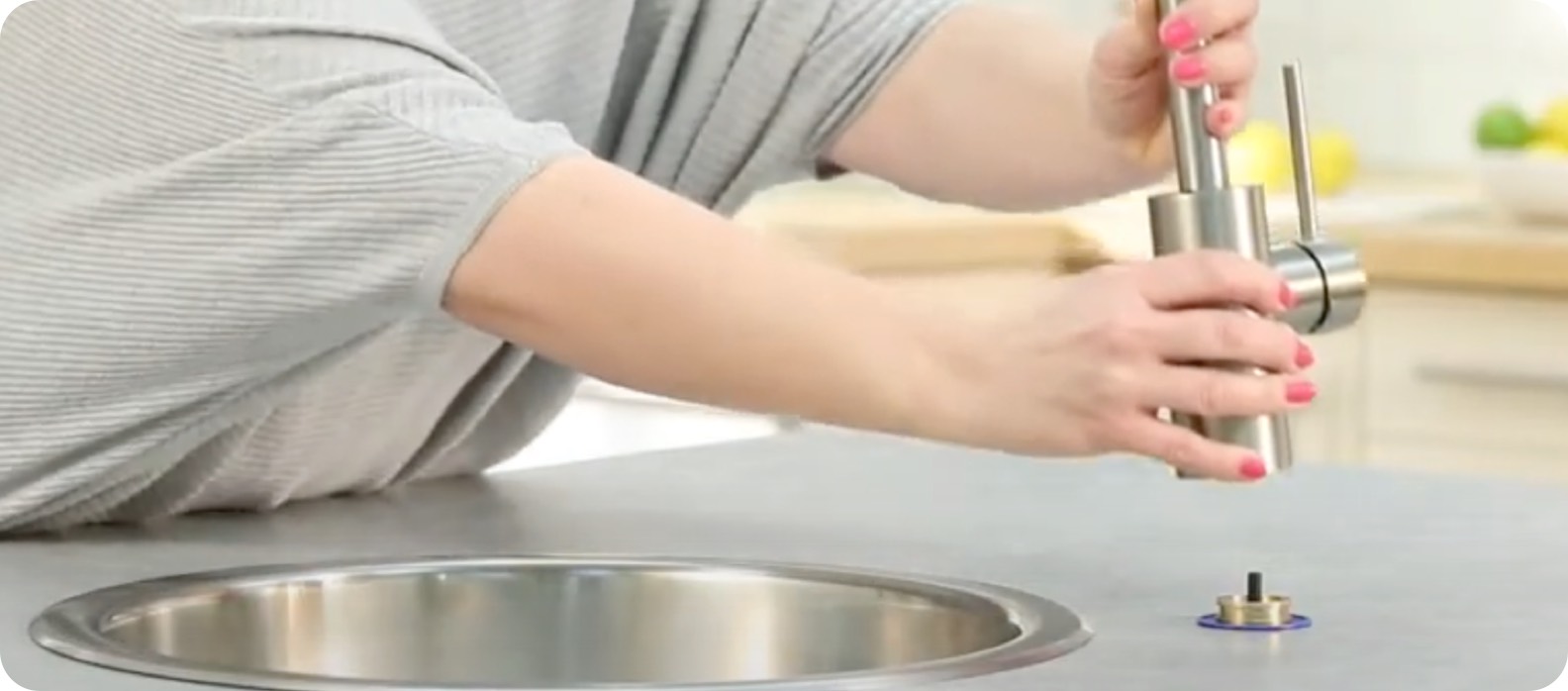The Mikk Valve Tap (MV1)
Mike Valve products
What is the Mikk Valve?
The Mikk Valve is a simple device that can be added to any cold or hot water system in a domestic or industrial setting. It saves significant amounts of time and money, in terms of both installation and maintenance, while also conserving water.
How it works
A default ‘valve closed’ rather than the current ‘valve open’ position means there’s no need to turn off the mains supply once fitted. Imagine having the ability to isolate a tap, radiator, shower or toilet without affecting anything else. A system no longer needs to be drained, saving water and allowing appliances to continue functioning as normal while repairs are carried out.

An existing tap is guaranteed to fail – it’s not a matter of if but when. Washers wear, and although they can be replaced, the procedure is often time consuming and complex. The valve that releases the fluid and the switch mechanism that turns the flow on and off are housed within the tap, so if there’s a fault, the whole piece needs replacing .
A Mikk Valve separates out the valve from the switch mechanism allowing the tap to be replaced easily, without disconnecting the mains supply.
The Mikk Valve tap is designed for single pillar rotary or push down and mixer taps. Its four simple components ensure there is no complex disassembly: just give an extra two twists to turn the tap off, use an Allen key to remove the body, replace what’s broken and refit it.

How much does a dripping tap cost?
A cold tap that drips at one drip a second loses 33 litres of water a day or as much as 12,000 litres (12m3) per annum.
Figures are calculated based on one dripping tap per property for a single household. Then one dripping tap per ten homes for a housing association with a portfolio of 10,000 properties, and a Maintenance Contractor with a portfolio of 500,000 properties (NB the HA or Contractor don’t pay the water charges these fall to the residents of the home)
A cold tap that drips constantly could lose 3 baths full of water everyday, or as much as 1095 bath fulls per annum
What are the potential maintenance savings?
Potential maintenance cost savings for housing associations, and other providers, are highly significant.
Figures are calculated for a single household, a housing association with a portfolio of 10,000 properties, and a Maintenance Contractor with a portfolio of 500,000 properties.
For a householder the charge for repair or replacement of a tap includes a call out charge.
A Housing Association wouldn’t incur the additional call out charge but would just allow the tap to continue to drip until the next maintenance cycle and gas checks etc.
The calculations assume one tap replaced or repaired per property every ten years.
* All properties in the portfolio are serviced every year. This is the extra labour cost only of one in ten needing a tap replaced or repaired, each taking approximately half an hour to do at a fee of £30 (£60 per hour).
Legionella Control
All buildings accessed by the public have to have in place controls to prevent Legionella. This includes the NHS, Schools, Service stations and Hotels. They do this by either storing or heating the hot water to a reasonably high temperature. However, at the point of use of the hot water, they have to reduce the temperature to avoid scalding.
This is done with the use of a Thermostatic Mixer Valve (TMV) usually under the sink and then the mixed warm water is fed to the tap via a single supply.
The guidance is that these taps should be descaled every three months and infrequently used taps flushed for five minutes.
With a Mikk Valve and a few spare taps, instead of taking time to descale in-situ, the tap can quickly be swapped with no water loss and taken back and descaled in a workshop and the process repeated in a continual cycle that saves a lot of time and money.